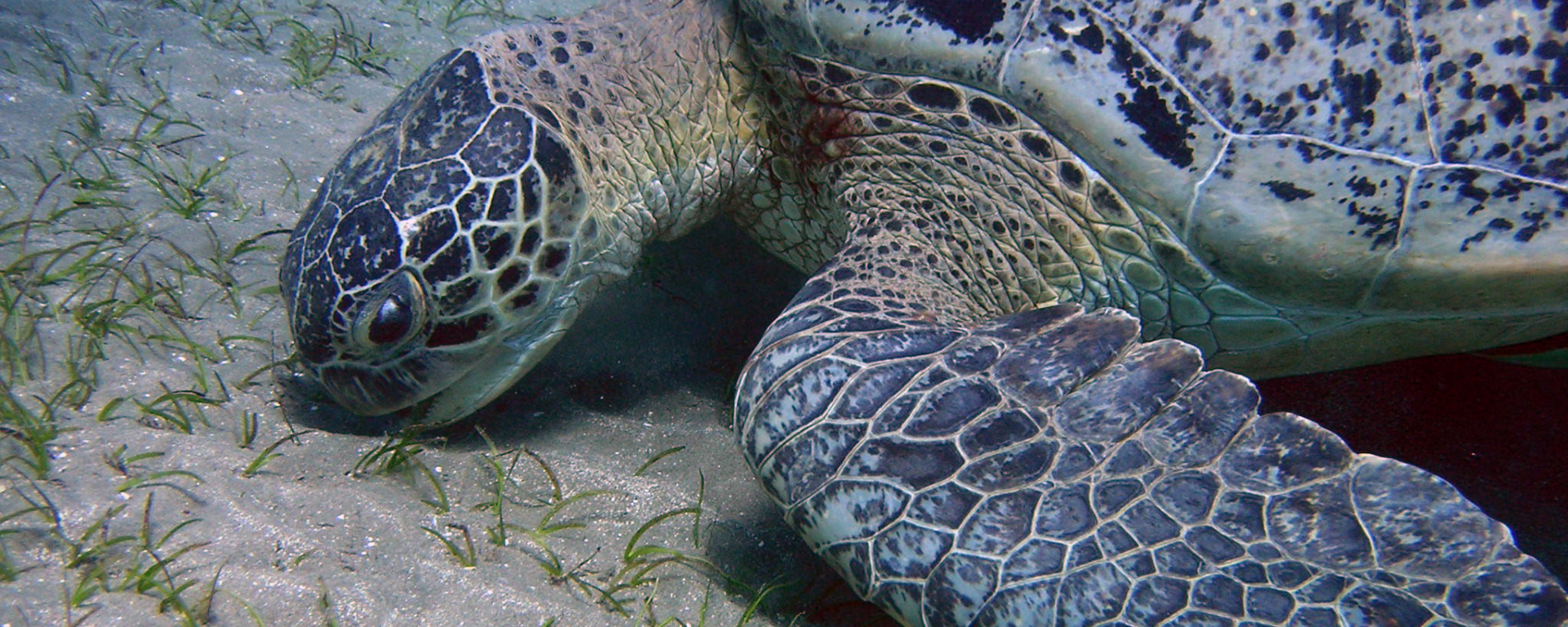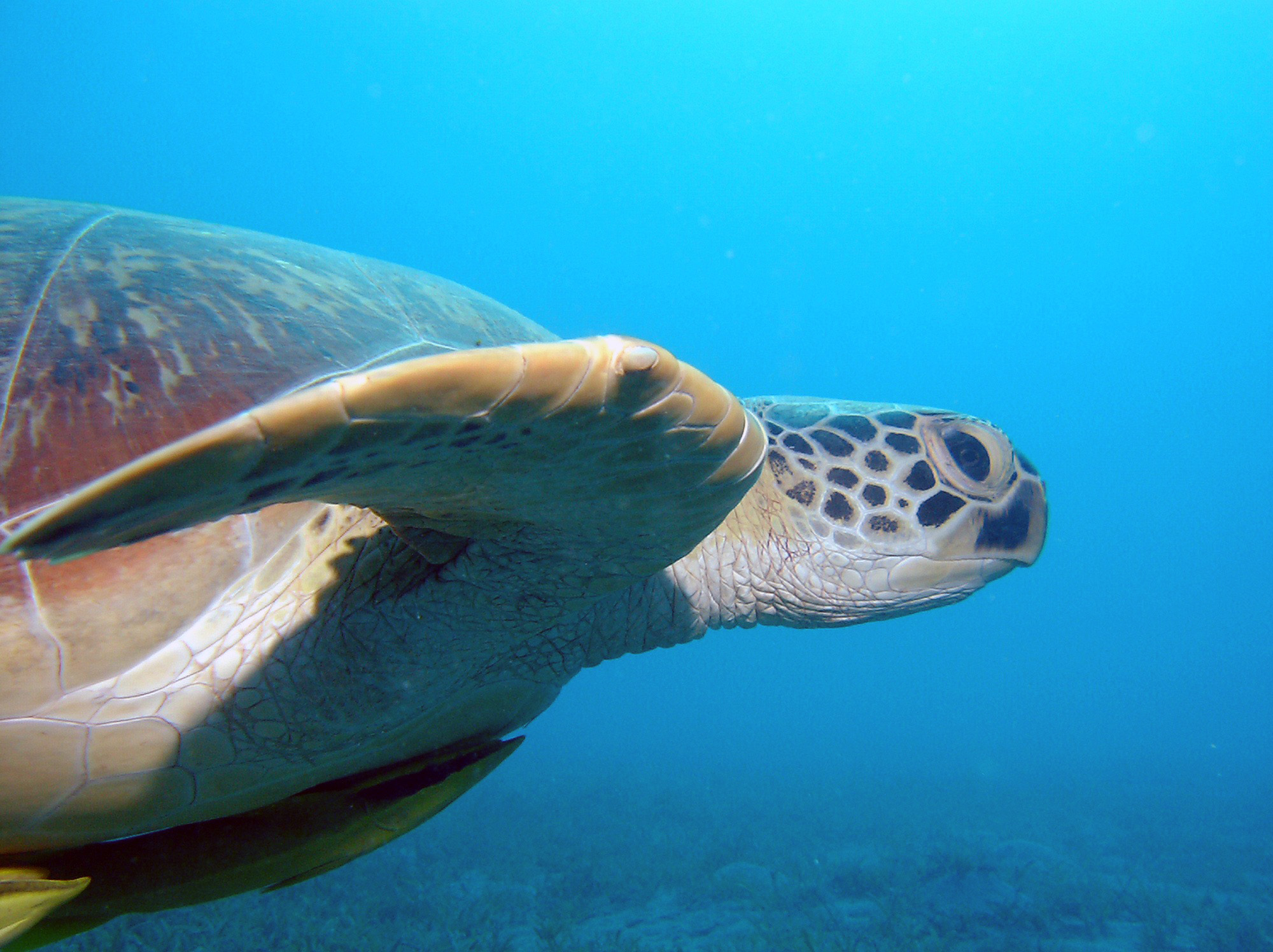Are there sea turtles nesting on Lanyu island? What about different species of sea turtles? Are they all protected? These and more questions we want to ask and try to give answers. We would like to introduce you to these wonderful ancient creatures that have survived for more than roughly 150 million years on earth!
The sea around Lanyu is home to at least five species of sea turtle (Peter Kowalski, peterskowalski.blogspot.ch), an ancient aquatic reptile found in all oceans of the world. After hatching from eggs on a sandy beach, males remain entirely aquatic, females return to their birthplace to lay their eggs.
The green turtle (Chelonia mydas) is the most common nesting turtle on Lanyu, but four other species can be observed as well. They are described below in order of abundance.
Some Turtle Questions & Answers
(1) Green turtle (Chelonia mydas): They don’t look green – so why are they called green?
Their fat and cartilage is green (turtle soup). Large numbers were caught and eaten by early European seafarers who called this species green sea turtle. For more infos check here: Green Turtle (worldwildlife.org), Green Sea Turtle (nationalgeographic.com), Marine Turtle Specialist Group (iucn-mtsg.org).
(2) Loggerhead turtle (Caretta caretta): Why is this turtle called loggerhead?
Loggerheads are named for their large heads, with jaws powerful enough to crush an adult queen conch. For more infos check here: Loggerhead sea turtle (nationalgeographic.com), Loggerhead Red List Assessments (2015, iucn-mtsg.org), Assessment of the conservation status of the loggerhead turtle in the Indian Ocean and South-East Asia (PDF from IOSEA Marine Turtles (cms.int))
(3) Hawksbill turtle (Eretmochelys imbricata): What does the name hawksbill suggest?
This critically endangered species has a beautiful shell and has long been exploited for tortoisshell jewellry in spite of ist protected status. It feeds on sponges which contain glassy spikes using its „beak“.
Photos by Barbara Jäckli ©
(4) Olive ridley turtle (Lepidochelys olivacea): How is this turtle’s behaviour different from all the others?
Unlike other sea turtles (except for the Atlantic Kemps ridley) it nests during daytime in a mass nesting event. They nest only in a few sites which increases their vulnerability, Olive Ridley Turtle (worldwildlife.org).
(5) Leatherback turtle (Dermochelys coriacea): Why is it called leatherback?
It doesn’t have a bony shell but a leathery one! Its migrations are also the longest. Pacific poultations are critically endangered as a result of fishery by-catch and egg collection, Leatherback Turtle (worldwildlife.org). The largest sea turtle, it can dive to 1000 m and eats gelatinous organisms.
If you would like to identify a sea turtle, the following links are recommended:
Marine turtle field guide (PDF from Queensland Parks and Wildlife Service, parks.des.qld.gov.au)
IUCN SSC Marine Turtle Specialist Group (iucn-mtsg.org)
Anatomy
Can you find your own organs in a sea turtle?
Cross section of a sea turtle (cairnsturtlerehab.org.au)
Life history and survival
Here two video links to crucial events of a sea turtle’s life:
A female lays eggs (youtube.com)
Hatchlings race to the sea (youtube.com)
Specific threats
Why are nets such an acute threat to the life of a turtle?
Turtles must surface to breathe air and drown if they become entangled in a netas so-called by-catch: Hundreds of 1000s die every year in shrimp trawl nets, on longline hooks and in drifting gillnets. A turtle excluder device can help prevent by-catch in shrimp fisheries: How a simple technology is saving turtles (worldwildlife.org)
Can poachers and criminals become protectors of sea turtles?
Turtle shell used to be a prized commodity from the beautiful shell of the Hawksbill sea turtle; the meat was eaten locally. In the South Pacific (Solomon Islands) extremely decimated turtle populations have been recovering due to conservation efforts by the government, enlisting the help of former poachers and criminals. See the video! Home for the Hawksbill (youtube.com)
Why does light disturb turtles?
Light confuses newly hatched baby turtles which emerge at night from finding the sea (breaking waves on the shore usually shine brighter than the surroundings, showing the way to the sea). Light also deters egg-laying females from returning to their ancestral nesting sites. When filming a hatching event, it is important not to confuse the hatchlings with lights (see the video baby turtle hatch, youtube.com)
Why are sea turtles so vulnerable although they have a hard bony shell?
Turtles rest on the water surface and need to breathe air. A turtle is quite vulnerable as the spinal chord is just under the surface of its bony „shell“ (see in the cross section of a sea turtle, cairnsturtlerehab.org.au)
Why are warmer beach sands especially threatening to sea turtles’ survival?
Apart from rising sea levels and storms which threaten nesting habitats, sea turtles are especially affected by temperature: sex determination in a developing turtle doesn’t depend on chromosomes but on the temperature of the sand of the nest. At 29 °C the ratio of males to females is 1:1, but higher temperatures cause more females and less males to hatch. In the future the balance is feared to tip so that populations may collapse. Researchers propose protecting especially white beaches which heat up less under the sun. Article More sea turtles will be born female as climate warms (theguardian.com).
Why do turtles eat plastic?
Most turtles eat jellyfish, hunting by sight, but plastic bags looking like jellyfish are not in their repertoire of dangers! Another reason to hate plastic bags, seeturtles.org.





Hi there! Such a wonderful write-up, thanks!